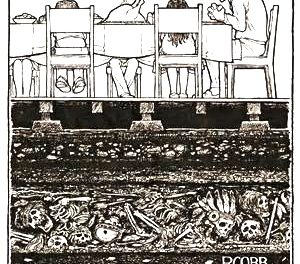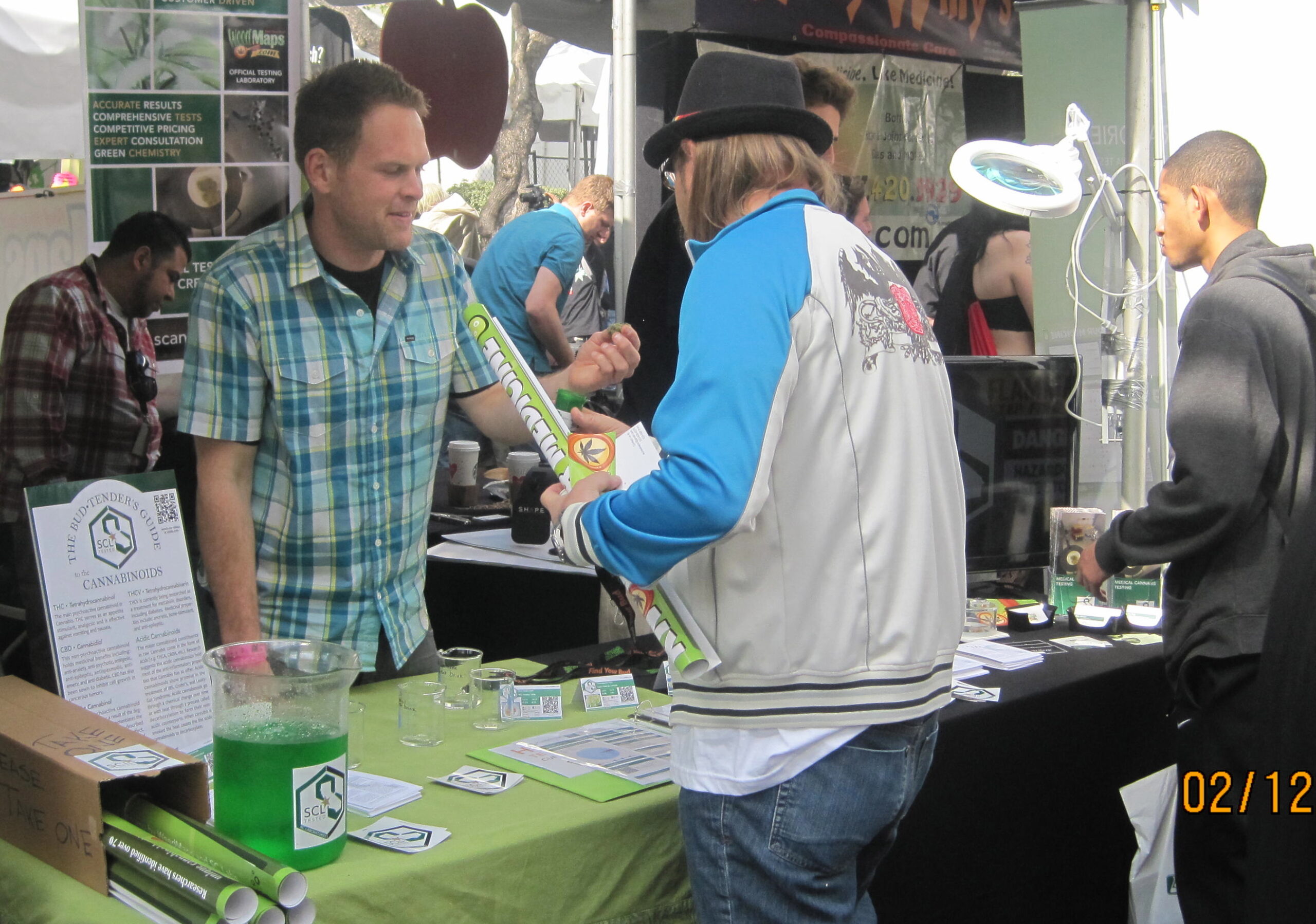Editors of every publication that takes itself seriously rely on a stylebook —a sort of dictionary— to impose consistency in word usage and formatting. The New York Times produces its own in-house manual, but most publications rely on stylebooks published by the Associated Press, the University of Chicago, or The Modern Language Association. Stylebooks get revised as the language changes. On May 30 the AP Stylebook Online sent out these revisions to subscribers. We predict another revision in the near future that defines “CBD” properly and doesn’t discriminate against “cannabinoid.”
marijuana, medical marijuana (new entry)
Marijuana is the dried flower of the cannabis plant, used as a drug for recreational or medical purposes. Cannabis is the usual term outside North America; it and pot are also acceptable. Some governments and other entities prefer cannabis because of arguments that the term marijuana was popularized in the United States in the early 20th century to stoke anti-Mexican sentiment. Slang terms such as weed, reefer, ganja or 420 are acceptable in limited, colloquial cases or in quotations.
In the United States, many states have legalized marijuana for medical purposes; others have legalized the drug for recreational use. Possession and distribution of marijuana remains a federal offense.
The cannabis plant contains a number of chemical compounds known as cannabinoids, a term that is usually awkward in all but scientific contexts; refer to them as compounds, chemicals or derivatives if needed. THC is one of them and is acceptable on first reference for tetrahydrocannabinol, the plant’s main psychoactive component.
When cannabis is used for medical purposes, it is generally known as medical marijuana. The term usually refers to the dried flowers that are smoked, vaporized or incorporated into food known as edibles.
Some of the cannabis plant’s compounds are found in pharmaceuticals or dietary supplements allowed by the federal government or by states that have not legalized medical or recreational marijuana, but they still may fall under the umbrella of medical marijuana. Their active ingredients may be isolated naturally or synthesized in labs, and include Marinol, a prescription drug made with synthetic THC, and hemp oil, approved in many states for medical use and marketed in the U.S. and elsewhere in some over-the-counter products. One popular form of hemp oil is rich in cannabidiol and is often shortened to CBD oil; both terms are best confined to quotations or product names unless specificity is required.
Some synthetic cannabis compounds are sold or marketed for recreational use, such as Spice and K2, often described as dangerous. They should be referred to as synthetic or imitation marijuana/cannabis/pot, not fake pot or the awkward term synthetic cannabinoids, though the latter is acceptable with explanation in scientific contexts. Do not refer to it as synthetic THC, since it generally contains other chemicals.
Hashish is a concentrated form of marijuana, and hashish or hash oil is an extract that can be smoked, vaporized or infused into edibles.
Hemp, with some exceptions, such as hemp oil, generally refers to the fibers of the plant, used in making rope, clothing, paper and other products.
See drugs.
party affiliation (revised)
A political figure’s party affiliation is often relevant, but not always. Include party affiliation if a politician’s actions could reasonably be seen as having an effect on policy or debate, or if readers need it for understanding. But reference to party affiliation is not necessary when a story has no link to politics. If in doubt, err on the side of including party affiliation.
– Party affiliation can be used on first reference when it is the most important element to connect with the subject: Republican Sen. Tim Scott of South Carolina said …
– On second reference to add context between the party affiliation and the rest of the story: Rep. Frank Lucas of Oklahoma, the senior Republican on the House Agriculture Committee, said he supports the amendment.
– Leave out when the story is clearly not political: The governor attended the NCAA Tournament basketball game, having graduated from Villanova in 1995. The senator attended her daughter’s high school graduation.
– But use when a political connection exists: The Democratic governor sat courtside next to the top donor to his campaign. The Republican senator spoke at her daughter’s graduation two weeks after voting on the education bill.
– In stories about party meetings, such as a report on the Republican National Convention, no specific reference to party affiliation is necessary unless an individual is not a member of the party in question.
SHORT-FORM PUNCTUATION: Set short forms such as R-S.C. off from a name by commas: Sen. Tim Scott, R-S.C., said …
Use the abbreviations listed in the entries for each state. (No abbreviations for Alaska, Hawaii, Idaho, Iowa, Maine, Ohio, Texas and Utah.)
FORM FOR U.S. HOUSE MEMBERS: The normal practice for U.S. House members is to identify them by party and state. In contexts where state affiliation is clear and home city is relevant, such as a state election roundup, identify representatives by party and city: U.S. Reps. Ander Crenshaw, R-Jacksonville, and Frederica Wilson, D-Miami. If this option is used, be consistent throughout the story.
FORM FOR STATE LEGISLATORS: Short-form listings showing party and home city are appropriate in state stories. For national stories, the normal practice is to say that the individual is a Republican or Democrat. Use a short-form listing only if the legislator’s home city is relevant.
See legislative titles.
LGBT, LGBTQ (revised)
Acceptable in all references for lesbian, gay, bisexual and transgender, or lesbian, gay, bisexual, transgender and questioning and/or queer. In quotations and the formal names of organizations and events, other forms such as LGBTQIA and other variations are also acceptable with the other letters explained. I generally stands for intersex, and A can stand for asexual (a person who doesn’t experience sexual attraction), ally (a person who is not LGBT but who actively supports the LGBT community) or both.
Queer is acceptable for people and organizations that use the term to identify themselves. Do not use it when intended as a slur. Follow guidelines for obscenities, profanities, vulgarities as appropriate. See gay or gender.
emoji (s. and pl.) (changes the style for the plural)
A symbol, such as a cartoon face, hand gesture, animal or other object, that might be used instead of a word or as an illustration in text messages or on social media.
quotations in the news (a new section of the entry)
SOCIAL MEDIA POSTS AND TEXT MESSAGES: Social media posts and text messages often contain emoji, GIFs or other imagery that need to be conveyed to readers using words. Treat the visual material as context or gestures when important to include, describing by paraphrasing:
Chavis sparked a flurry of responses against the airline after tweeting a GIF of large crowds at the gate, with the message “#missinghoneymoon” and an emoji string of a worried smiley, a ring, an hourglass and an umbrella propped on a beach.
Be aware that some GIFs, emoji or other images may contain hidden meanings and nuances requiring consideration and more than just a simple description of the image posted.
Do not use parentheses to describe an emoji within a direct quote, to avoid confusing readers by making it seem as if the person being quoted wrote out the description in text.
Many story platforms support displaying posts as they actually appear, or hyperlinking to posts on social networks, giving journalists several options to let readers see material for themselves. For example, some production systems may allow you to directly insert emoji into the text of a story. Additionally, most social networks allow for direct embedding of such material, and screen captures may also be acceptable if images are displayed in accordance with your newsroom’s visual standards.
act, amendment, bill, law, measure, ordinance, resolution, rule, statute (new)
The word act is sometimes included in a formal name for pending or implemented legislation. Capitalize when part of the name: the Taft-Hartley Act.
An amendment is a change or proposed change to a bill or law. Amendments are usually passed or enacted.
A bill is a draft proposal presented to a lawmaking body, such as a legislature, that requires debate, voting and final approval before it can become a law. Bills usually pass or fail, or are approved or signed. Do not capitalize when part of references to specific legislation: the Kennedy bill. Use conditional language for bills throughout the legislative process: The bill would prohibit such activity; the bill seeks to legalize the drug.
A law is a bill that has been approved by a lawmaking body, usually at the state or federal level, and that sometimes requires the signature of an executive such as a governor or president. Laws are usually enacted and don’t necessarily take effect at the time they are enacted.
An ordinance is the municipal equivalent of a law. Ordinances are enacted. Before they become ordinances, they should usually be called proposals or proposed ordinances. Though terminology varies from place to place, it’s usually best to avoid referring to such proposals as bills, to avoid confusion with higher levels of government.
A resolution is a sentiment or recommendation of a lawmaking body, often described as binding or nonbinding depending on whether it has the force of law. Resolutions are adopted or fail.
A rule is an authoritative regulation that can be enacted, created or ordered at various levels of government.
A statute is a written and enacted law or ordinance.
biracial, multiracial (new)
Acceptable, when clearly relevant, to describe people with more than one racial heritage. Usually more useful when describing large, diverse groups of people than individuals. Avoid mixed-race, which can carry negative connotations, unless a story subject prefers the term. Be specific if possible, and then use biracial for people of two heritages or multiracial for those of two or more on subsequent references if needed. Examples: She has an African-American father and a white mother instead of She is biracial. But The study of biracial people showed a split in support along gender lines. Multiracial can encompass people of any combination of races.
boy, girl (replaces and revises the previous boy and girl entries)
Generally acceptable to describe males or females younger than 18. While it is always inaccurate to call people under 18 men or women and people 18 and older boys or girls, be aware of nuances and unintentional implications. Referring to black males of any age and in any context as boys, for instance, can be perceived as demeaning and call to mind historical language used by some to address black men. Be specific about ages if possible, or refer to black youths, child, teen or similar.
embryo, fetus, unborn baby, unborn child (new)
While the terms are essentially interchangeable in many common uses, each has become politicized by the abortion debate even in uses not involving abortion. Anti-abortion advocates say fetus devalues a human life; abortion-rights supporters argue unborn child or baby equate termination of a pregnancy with murder by emphasizing the fetus’s humanity.
Write clearly and sensitively, using any of the terms when appropriate:
Fetus, which refers to the stage in human development from the eighth week of pregnancy to birth, is preferred in many cases, including almost all scientific and medical uses: The virus can be disastrous to a fetus. The lawsuit alleges harm to a fetus that prosecutors claim was viable. The research was conducted on fetal tissue.
In scientific uses referring to the first seven weeks of human development after conception, use embryo.
The context or tone of a story can allow for unborn baby or child in cases where fetus could seem clinical or cold: Weiss said her love for her unborn baby was the strongest feeling she had ever felt. The expectant mother lost her baby in the seventh month of pregnancy.
FOOD CHAPTER
ahi (new)
Hawaiian term for several varieties of tuna, especially yellowfin and bigeye. The terms ahi, ahi tuna, yellowfin tuna and bigeye tuna are acceptable. Bigeye tuna are generally caught in deeper water than yellowfin and typically have a higher fat content.
amaro (new)
Italian herbal liqueur usually drunk as an after-dinner drink to aid digestion. Amari (the plural) include Campari, Fernet-Branca and Aperol and other liqueurs.
chile, chiles (subs for the previous chili, chilies entry and revises the guidance)
Any of a variety of spicy peppers or the sauces or gravies derived from them. The meat- and/or bean-based dish is chili.
chorizo (new)
A type of pork sausage that can be spicy or sweet.
churros (new)
Fried pastries covered in cinnamon sugar and sometimes dipped in chocolate sauce. Popular in Latin America.
dressing, stuffing (new)
Dressing is cooked outside of the bird; stuffing is cooked inside. Use of the terms also varies regionally in the U.S., with one preferred over the other in some places regardless of how it’s prepared.
gingersnap (revised; instead of gingersnap cookie)
gluten-free (subs for previous gluten entry)
Describes foods without wheat, barley or rye grain, the three groups of whole grains that naturally contain the protein gluten. Usage: He ordered gluten-free pizza; the pizza is gluten free.
grain bowl (new)
An all-in-one meal made in a bowl. Includes rice, quinoa, barley, couscous, farro or other grains as a base. Other ingredients can include protein, raw or cooked vegetables, legumes, and a sauce.
India pale ale (expanded)
A hoppy beer style within the broader category of pale ale. IPA is acceptable on second reference.
Instant Pot (new)
Brand name for a combined pressure cooker and slow cooker. Users often refer to it as an InstaPot.
Kobe beef (revised)
Kobe, a city, is the capital of Japan’s Hyogo prefecture. Only beef from cattle raised in Hyogo prefecture can be called Kobe.
locavore (revised)
The preferred term for a person who strives to eat locally produced foods. Also, locavorism: a movement that embraces food grown nearby, offering the promise of better nutrition and being less burdensome to the environment.
matcha (new)
Japanese-style powder of specially grown and processed green tea leaves.
multicooker (new)
An electric kitchen appliance with a timer that typically simmers, boils, fries, roasts, stews, steams and browns food.
soba (new)
Thin noodles made from buckwheat flour or buckwheat and wheat flours. Soba noodles is redundant.
superfoods (new)
Foods thought to be nutritionally dense. Mostly plant-based, they also include some fish and dairy. Foods that have been labeled as superfood include salmon, blueberries and acai.
turducken (new)
A deboned chicken stuffed inside a deboned duck stuffed inside a deboned turkey
udon (new)
Thick noodles made from wheat flour. Udon noodles is redundant.
vegan (revised)
A person who abstains from eating animal products, such as meat, dairy, eggs and seafood. Some also avoid honey. Can also be used as an adjective in a food-related context: vegan menu, vegan cookbook.
za’atar (new)
A blend of herbs that typically includes ground dried thyme, oregano, marjoram, toasted sesame seeds and salt. Sometimes contains sumac.
FASHION CHAPTER:
Burch, Tory (1966-) (new)
American fashion designer who serves as chairman, CEO and designer of Tory Burch LLC.
espadrille (new)
Shoe with a rope sole, often with laces that tie around the ankles.
Galliano, John (1960-) (new)
Gibraltar-born British-Spanish fashion designer who was head designer for Givenchy, Christian Dior and his own label. He now is creative director for Maison Margiela. In 2011, he was fired from Dior and found guilty of expressing anti-Semitic ideas by a French court.
Herrera, Carolina (1939-) (new)
Venezuelan fashion designer known for dressing celebrities and first ladies, including Laura Bush, Michelle Obama and Jacqueline Kennedy Onassis.
Kors, Michael (1959-) (new)
American designer. Honorary chairman and chief creative officer for Michael Kors Holdings Ltd., which sells men’s and women’s clothing and accessories, shoes and fragrances.
Met Gala (new)
Annual fundraiser for the Costume Institute at the Metropolitan Museum of Art in New York. Held in May, the Met Gala attracts major celebrities and is themed to an exhibit at the museum.
messenger bag (new)
Bag with a large zippered central compartment or compartments and a fold-over flap at the front.






